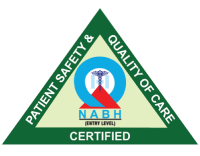Introduction
Ever had one of those days when you just had to check your blood sugar despite not being fasting? That’s when the random blood sugar test comes in useful. It’s what it says on the tin—a blood sugar test done at some random time during the day, no matter how long it is since you ate.
For adults, particularly those who are monitoring diabetes or just tracking their health, knowledge of the random blood sugar level is vital. But what constitutes normal? And when do you worry? Let’s break it down.
What is Normal Random Blood Sugar Level in Adults?
Whether you’re in the clinic, stuck in traffic with a glucometer in your pocket, or just returning from a birthday party dinner, your blood sugar doesn’t have a clock on it—it’s always trying to tell you something.
Therefore, what is the normal random blood sugar level in adults? Usually, a normal adult should have a random blood sugar level (RBS) of:
- Below 140 mg/dL (7.8 mmol/L)
This is in the normal range. If your result is elevated, particularly repeatedly, it may be time to discuss with your doctor.
What Affects Your Random Blood Sugar Level?
This is the part where it gets tricky—your RBS might change depending on a whole array of things:
1. Food Intake: Just had a heavy lunch or a sweet treat? Expect your sugar to spike temporarily.
2. Physical Activity: Exercise usually helps lower your sugar, even if it’s a brisk walk.
3. Stress & Illness: Both physical and emotional stress can increase your blood sugar levels.
4. Medications: Some drugs, including steroids and certain antidepressants, can impact glucose levels.
5. Sleep: In addition to not getting enough sleep or having a sleeping pattern, you may also interfere with your body’s sensitivity to insulin.
So before jumping into conclusion, think about what could have affected the figure that you read on the screen.
The Role of RBS Tests in Your Health
You could ask, what does the RBS test mean? Or even, RBS test full form?
Let’s get that straightened out:
- RBS Full Form: Random Blood Sugar
- RBS Test Means: A laboratory blood test to measure the level of glucose in the blood at a given point during the day.
Physicians usually utilize the RBS test for screening purposes, particularly during check-ups or emergencies where fasting is not feasible. It’s also usual in regular follow-up for diabetics or individuals presenting symptoms such as fatigue, excessive thirst, or urination.
Understanding RBS in Different Populations
Men vs Women
Although glucose targets are similar across genders, some research suggests men may be more likely to ignore early symptoms of high blood sugar.
Normal Sugar Level for Male Adults
For men, particularly those above 40 years, an ideal random blood sugar level is below 140 mg/dL. Lifestyle factors like smoking, alcohol, and belly fat can have a significant impact.
What If Your RBS is High?
If your RBS reads high on one occasion, don’t worry. One test is not your health. But if it’s persistently above 140–160 mg/dL, see a healthcare provider.
Here’s what you might need to do next:
- Get a fasting blood sugar test
- Get an HbA1c test for your long-term sugar level
- Monitor regularly for a few days
And naturally, changes in lifestyle such as having a healthy diet and proper exercise can contribute significantly in reducing your RBS level.
Preventing High Blood Sugar: Tips That Actually Work
Prevention isn’t difficult. Simple, routine things can keep your blood sugar steady.
1. Eat Smart
- Skip simple carbohydrates and sweets
- Add fiber like oats, veggies, and legumes
- Don’t miss meals—breakfast is a priority
2. Move More
30 minutes of walking, yoga, or spinning can decrease sugars naturally
3. Manage Stress
Long-term stress raises cortisol, which raises glucose. Meditation, deep breathing, or writing in a journal can help
4. Sleep Well
Strive for 7–8 hours of unbroken sleep. Inadequate sleep increases insulin resistance.
When to See a Doctor
Following are some indications that indicate you should speak with a doctor:
- You’re constantly tired
- You’re urinating more than normal
- You’re losing weight without dieting
- Your wounds take time to heal
These may be the first signs of diabetes or prediabetes. Don’t wait—schedule a test. And if you’re in Tamil Nadu, visit the Best Diabetes Hospital in Coimbatore for complete diagnosis, care, and management facilities.
Conclusion:
Your random blood sugar reading is a report card for the health of your body—particularly with diabetes. Learning what your numbers mean makes you a control agent in preventing things from getting out of control.
No matter whether you are living with diabetes, keeping a focus on your health, or just being health-conscious—your RBS test results are crucial to understand. The more you track, the better you will understand how your body responds to stress, food and exercise.
And recall—knowledge is power, but action is change.
Key Takeaways
- The random blood glucose level should be ideally less than 140 mg/dL in normal adults.
- The RBS test assists in evaluating blood glucose levels at any time during the day, without fasting.
- Closely monitoring and managing lifestyle are the essentials to avoid diabetes.
- Sustained high levels must always be assessed by a medical professional.
FAQs About Random Blood Sugar Levels
1. What is RBS normal range?
The RBS normal range for healthy adults is less than 140 mg/dL. Anything above 200 mg/dL may suggest diabetes, especially if accompanied by symptoms.
2. What is the normal limit for RBS?
The normal limit for RBS in most non-diabetic adults is 70–140 mg/dL. Post-meal readings may slightly increase but should return to normal within 2–3 hours.
3. What is a good RBS value?
A good RBS value lies between 90 to 130 mg/dL, depending on your age, health condition, and last meal timing.
4. What is RBS full form?
RBS stands for Random Blood Sugar—a test used to assess your glucose levels at any given time of day.
5. What should random glucose levels be by age?
While the typical adult’s sugar level across all age ranges is typically <140 mg/dL, older adults can tolerate a slightly broader target (up to 160 mg/dL), particularly if they have another medical condition.
6. What is the critical value for random blood sugar?
An RBS reading of over 200 mg/dL, especially if repeated, is considered critical and may indicate diabetes. If it’s over 300 mg/dL and you’re feeling unwell, it’s a medical emergency.
About Karpagam Hospital
Karpagam Hospital is dedicated to healthcare excellence, offering exceptional medical services with compassion and integrity. As a not-for-profit institution, we prioritize ethical medical research and actively support underserved rural communities. Our resources are responsibly managed to enhance education, patient care, and infrastructure, reflecting our commitment to societal and environmental well-being.
Disclaimer:
The information provided in this blog post is intended for general informational purposes only. It is not a substitute for professional medical advice, diagnosis, or treatment. Always seek the advice of your physician or other qualified healthcare provider with any questions you may have regarding a medical condition. Never disregard professional medical advice or delay in seeking it because of something you have read in this blog.








